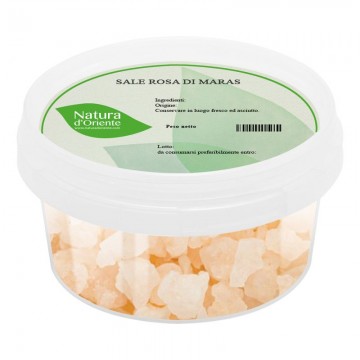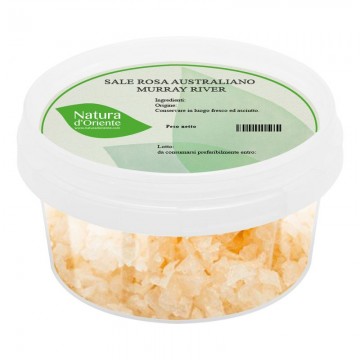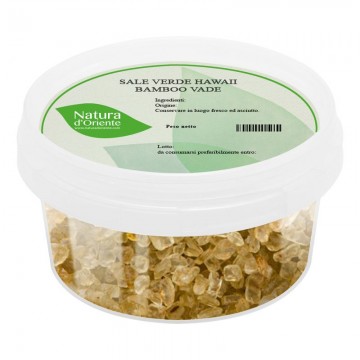This crystalline rock salt is called the salt diamond due to its perfect shape. Many beneficial properties have been attributed to it since ancient times, today the rare Halite salt from the Himalayas is used both for the well-being of the skin and in cooking. On foods, you can infuse the mineral notes of the earth, being a halite salt extracted from rocks. An unrefined edible Himalayan salt, ready in crystal for consumption or for therapeutic uses.
Himalayan Halite salt: features and benefits
Himalayan white salt is considered the rarest in its territory, free of impurities and with the same benefits as pink salt. We know this salt that contains several minerals and natural trace elements, over 80, so fine that they are easily assimilated by the body for our well-being. In particular to promote digestion. It is a pure salt formed millions of years ago, thanks to the high pressures on the rocks that occurred in the Himalayan mountains. The higher the pressure, the higher the crystal structure, and this mountain range made the crystal lattice of Himalayan salt perfect. It possesses greater purity than other halite salts from other mountains, and other minerals. It can be seen in this transparent version, similar to the diamond. It is used both as kitchen salt and for bath salts and for the creation of cutting boards or trays for food preparation. When used for 1% hydro-saline baths, this Himalayan halite can rebalance the pH and help with problems such as psoriasis, herpes, skin irritations. It is used for inhalations that help the respiratory system, and to create pillows of salt. This Himalayan halite salt is also used in hydro-saline washes and rinses useful for the respiratory system and mucosal irritations. In some cases, it is used with a 26% saturated water and salt solution. The transparent white color of the Himalayan salt derives from some particular salt crystals from this region, which do not have the minerals present in some veins (iron oxide), which give a more rosy color.
Origins and History of the extraction
Himalayan halite salt was formed about 250 million years ago, after heat dried up the primordial sea from which it derives. It is pristine and natural, identical in composition to the ancient ocean, now enclosed in the Himalayan mountain range. The principle of high pressure that transforms carbon into diamond also created halite salt from rock salt; he transformed it into almost transparent white crystals, which show a perfect cubic shape. According to a legend, the discovery of salt deposits in the Himalayas dates back to the time of Alexander the Great. In fact, the first news of extraction dates back to the thirteenth century, in medieval times. Much of the Himalayan salt is extracted from the Khewra mine in Pakistan, which is located at the foot of a hilly system called the Salt Range. Like many other types of salt, this “salt diamond” halite also has a history linked to purification and health rituals. In ancient times, this salt was used in folk medicine to treat colds, digestion, gout, arthritis and osteoarthritis, sleep disturbances, agitation and kidney problems. It was considered capable of rebalancing the fluids in the body, regulating the intestine and giving energy. It has great detoxifying power. Currently, salt extraction takes place partly with manual tools, partly with mechanical ones - it depends on the areas of the mines. The Himalayan Diamond Halite Salt is extracted and washed by hand, and then dried in the sun.
Nutritional values of Himalayan halite salt
From a nutritional point of view, this salt contains mostly sodium chloride, as well as many trace elements and minerals such as potassium, chromium, magnesium, calcium, iron, zinc. In addition, it has lower levels of sodium than common table salt, and does not contain particular doses of iodine.
How to use Himalayan Halite salt in the kitchen
It is a kitchen salt with a high salinity, so it is necessary to add a pinch to the dishes, after grating it with the salt grinder. It can be used in any recipe, both as a salt for the absorption of water in vegetables, and as a finish. When choosing to salt the meat before grilling, remember that this brings the natural juices to the surface, creating a salty external crust. Also in this case, a few grains are enough to not make the crosta too salty. It is a perfect salt for the end of cooking, in which the juices are reabsorbed and the meat is kept tender. Halite salt from the Himalayas: side effects and contraindications Caution is advised in the intake of sea salt in case of hypertension, cardiovascular disorders, diseases related to the kidneys and blood vessels. Furthermore, it is good to moderate the quantities during pregnancy and breastfeeding.









 No reward points for this product.
No reward points for this product.















